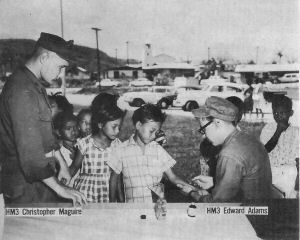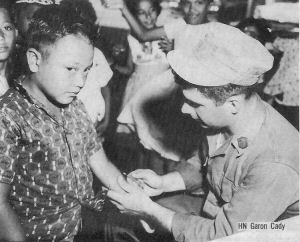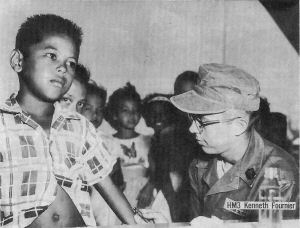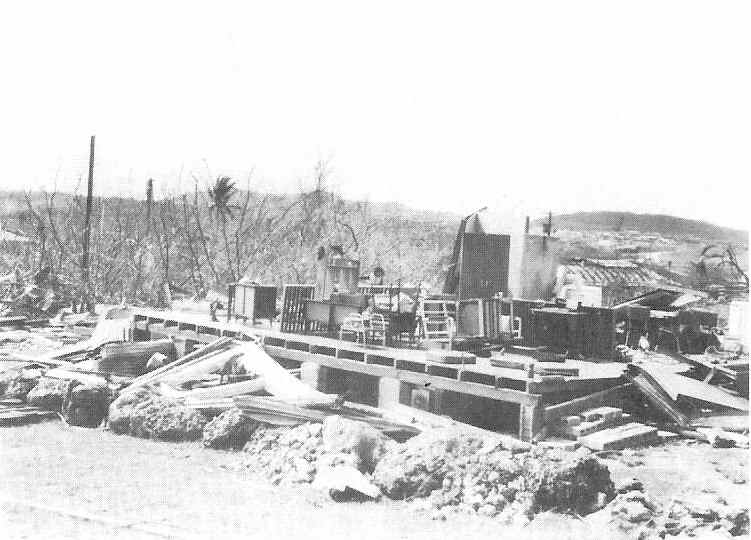

Arriving with the men of the 3rd Battalion, 4th Marines, flown to Guam from Hawaii to assist in the Typhoon Karen recovery program , were 17 U.S. Navy Corpsmen.
Upon debarking, their services were requested by the Force Medical Officer to administer typhoid vaccine to the Guamanian population throughout the villages.

Final plans were formulated and put into operation Friday, November 17. They originally called for pickup and delivery of one corpsman for each village medical center daily. However, it soon became obvious that a transportation run from Merizo to Yigo with 14 stops in between was impractical, if for no other reason than the loss of some six hours time. The remedy, naturally enough, came from the corpsmen who decided to set housekeeping in each village and simply move in for the duration.
According to Bill Carlin, HM1, in Talofofo, the village nurse, school teachers and volunteer helpers were "very receptive and anxious to help in any way possible."
HMC George Vangeloff in Inarajan reports that many of the corpsmen, for the first time in their careers, were given "a big surprise, in that normally people have to be herded, ordered or forced to be inoculated, but not so in Guam. The villagers, with no prodding, were lined up each day waiting for the corpsman to begin his work. Everyone cooperated for the good of all"
 THIS HOME NEAR NAS Agana Shows the effects of Karen's visit. All four walls were
collapsed while the furniture remained on the floor. (ComNavMar Photo)
THIS HOME NEAR NAS Agana Shows the effects of Karen's visit. All four walls were
collapsed while the furniture remained on the floor. (ComNavMar Photo)
As for accommodations, the corpsmen slept in the dispensary or a school room or even the fire house. Their meals were provided by the villagers. Bertil Olsen, HM3, tells of how he was wakened in the morning by villagers and the aroma of "fried eggs and ham, served me just like breakfast in bed."
Kenneth Skaggs, HM3, and Garon Cady, HN, in Sinajana compiled the largest score, innoculating some 5,339 adults and children over the weekend.
Four of the "Docs" were greeted in the midst of their work with the welcome news that they had been promoted after successfully completing the Navy's competitive examination. They are: HM2 Thomas Rancour, Yona; HM3 Christopher Maguire, Santa Rita; HM3 Kenneth Fournier, Piti; and HM3 Edward Adams, Barrigada.
In all, some 31,000 Guamanians were administered typhoid vaccine by the visiting corpsmen as part of the Navy's preventive medicine program.

